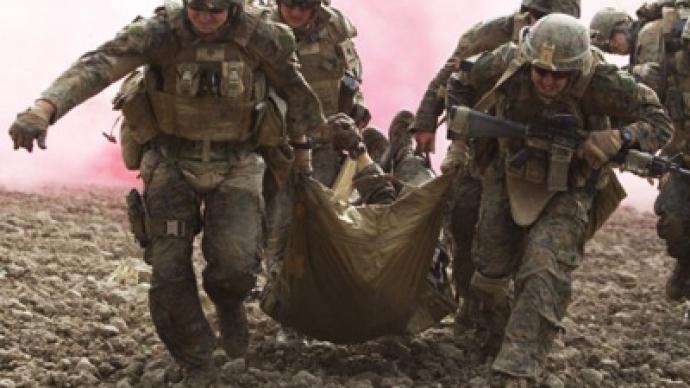Afghan War outsourced – US lost more civilians than servicemen in 2011

As the US readies to walk away from Afghanistan after a decade of destruction, a drawdown of troops is already causing a drop in military deaths. As those numbers drop, however, private employees hired by defense contractors are dying in droves.
For the first time since American troops began a military operation in Afghanistan over a decade ago, casualties suffered by private sector employees have surpassed that of US troops. In 2011, at least 430 workers employed by American contractors lost their lives as the US began relying less on military enforcements and more on performance by way of private companies. By comparison, the US military reports that 418 of their own died last year.As the Department of Defense discusses plans to pull out troops from Afghanistan ahead of schedule, the transition away from the government hired guns that instead favors a roster staffed by private contractors, the number of civilian deaths could only increase in the years to come.The news comes from a study just made available by Steven L Schooner, a law professor at George Washington University in DC. He compared statistics made available by some of the US military’s biggest private sector employers with data posted on iCasualties, a website that chronicles the death toll of American servicemen overseas. In describing his findings, Schooner explains the realities of the wartime transition as a very unfortunate phenomenon. Schooner writes that, historically, an increase in military deaths has in turn caused a decrease in public support for those operations. As opposition against Afghanistan has existed across the world since America began its skirmishes following the September 11 terrorist attacks, ongoing battles punctuated with continuous deaths have not caused support to surge in recent years. With news of an end to the war earlier than anticipated, however, Americans may be quick to lend support to expediting the transition. As the military responds by removing troops and the public death toll drops, the truth is that deaths are still occurring, and they aren’t the ones that Uncle Sam has to send in press releases for.“This article asserts that this stark and monolithic metric requires re-examination in light of a little-known phenomenon: on the modern battlefield, contractor personnel are dying at rates similar to – and at times in excess of – soldiers,” explains Schooner, who co-authored the study along with GWU’s Collin D Swan. “For the most part, this ‘substitution’ has taken place outside of the cognizance of the public and, potentially, Congress. This article explains the phenomenon, identifies some of the challenges and complexities associated with quantifying and qualifying the real price of combat in a modern outsourced military, and encourages greater transparency so that the public can more meaningfully participate in ‘the great American experiment.’”As the transition away from the armed forces that instead favors private sector workers, Schooner equates it to outsourcing the worst possible outcome. “By continuing to outsource high-risk jobs that were previously performed by soldiers, the military, in effect, is privatizing the ultimate sacrifice,” he tells the New York Times.That sacrifice, sadly, is privatized in more ways than one. “No one believes we’re underreporting military deaths. Everyone believes we’re underreporting contractor deaths,” adds Schooner. While the US military details the information of deaths suffered by its own servicemen and women, private contractors don’t opt to do the same. The actual tally of wartime deaths delivered onto translators, interpreters, private security teams and bodyguards could well surpass the 430 figure.














